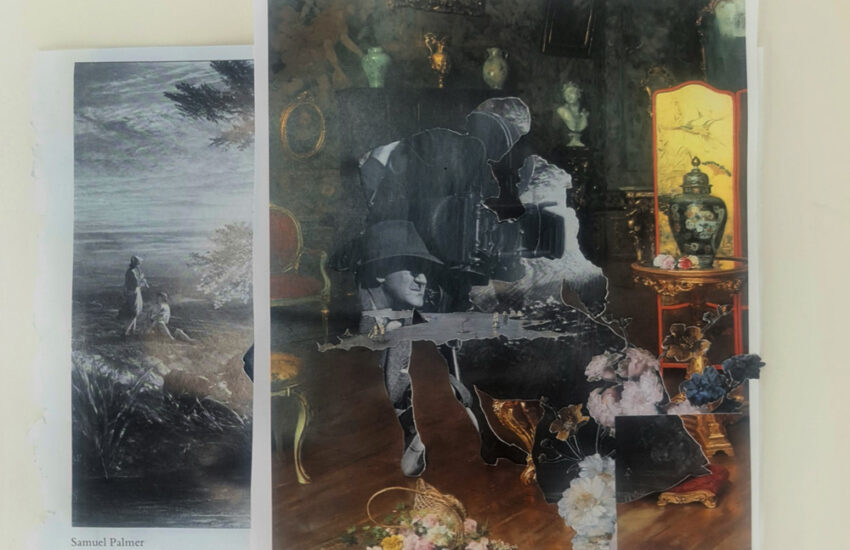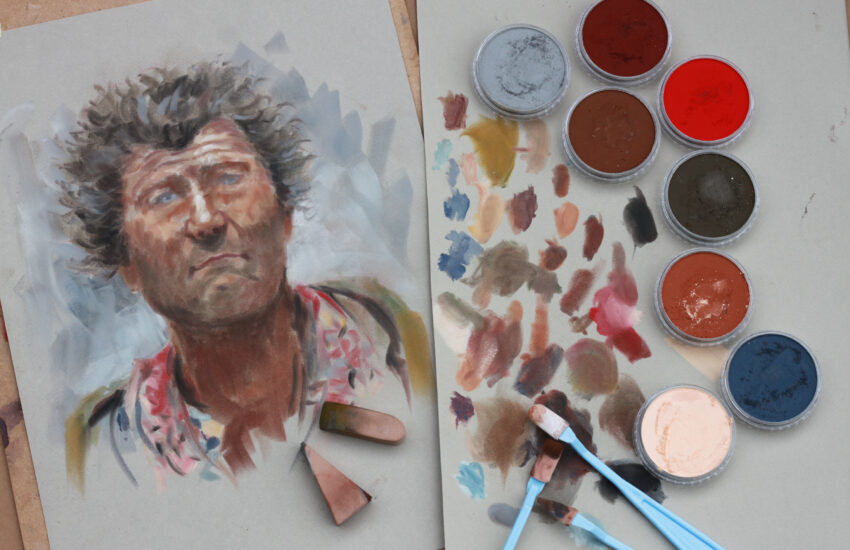An Introduction to Oil Pastels
Oil pastels are a versatile medium, yet often undervalued. With a wide range of techniques available, they offer countless possibilities for artists. They have a smooth and creamy texture and come in a compact stick form, made from a binder of non-drying oil and wax. Different brands offer varying combinations of binder quantity, resulting in various levels of hardness or softness. Oil pastels contain a high pigment content and provide high opacity, making layering light colours on darker ones easy. However, the quality of the brand you choose can impact pigment content and lightfastness, so investing in an artist-quality brand is recommended for the best results.
What products do you need?
The Pastels
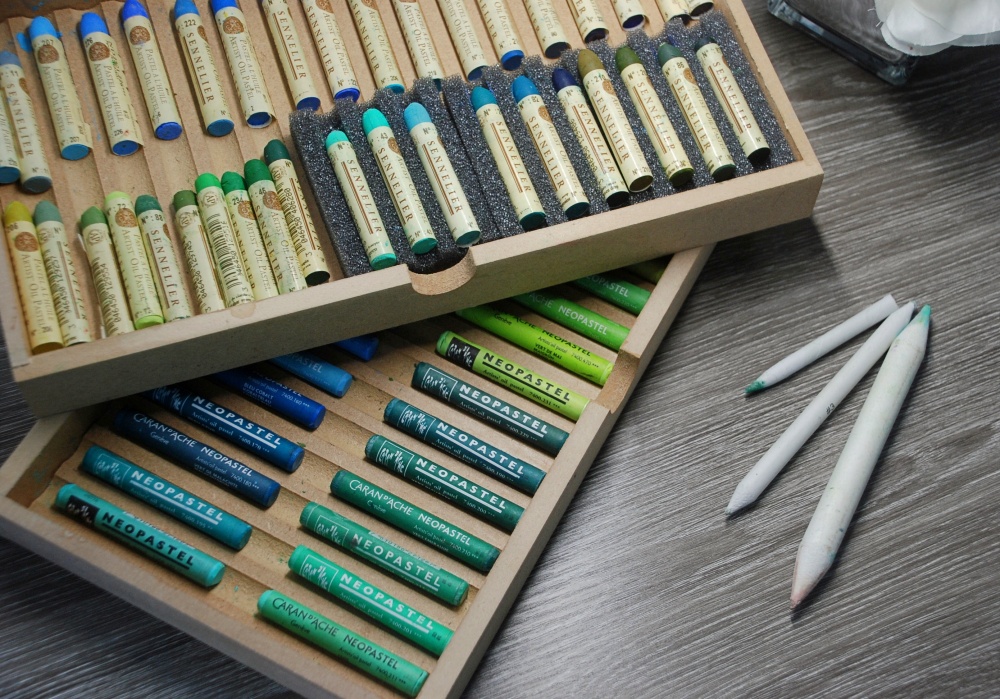
You don’t need a vast selection of products when starting with oil pastels. You only need a few oil pastels, a suitable surface, and a blending tool to begin your first painting. While buying cost-effective oil pastels with a wide range of colours may seem appealing, it’s important to note that cheap products may have low pigment content, impacting your overall experience with oil pastels. If you’re on a budget, consider purchasing an introductory set of pastels or buy a few colours Individually to test them out.
The Surfaces
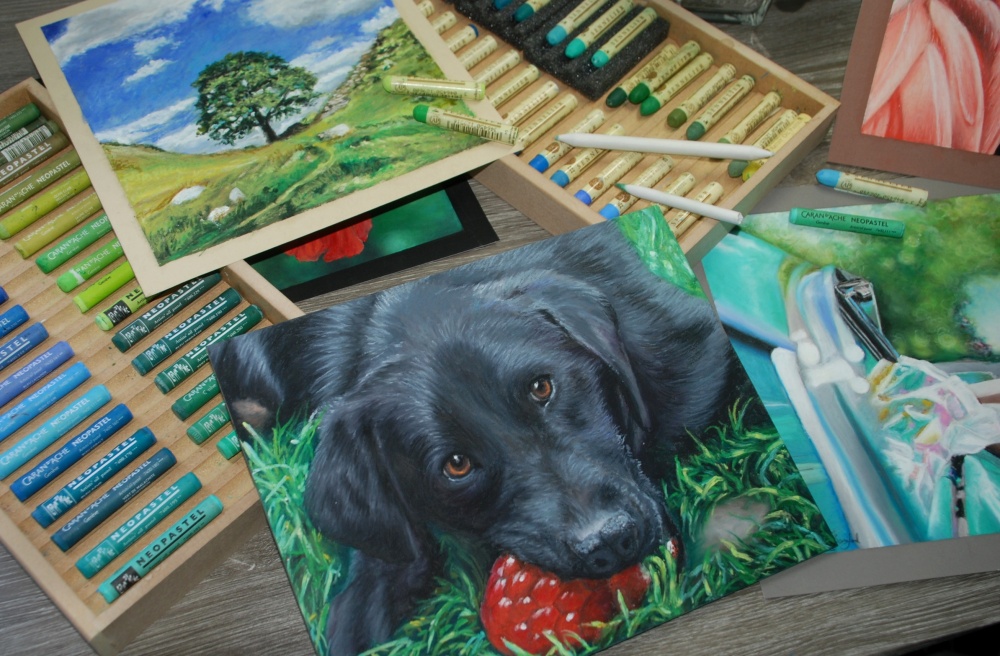
When looking for pastel surfaces, you will find many options. Oil pastels can be applied to surfaces other than pastel paper, but toothy surfaces provide better grip. In this article, the paintings displayed here were created on Clairfontaine Pastelmat, and Ampersand Pastelbord. The Pastelmat paper is ideal for the novice, but toothier papers are better for impasto work as they hold more layers. Other surface options you could consider are canvas, oil paper, heavy weight watercolour paper, mix media paper and even wood, glass, plastic and metal. If you are using a smoother surface you may want to prepare your surface with a pastel ground to give more tooth for the oil pastel to adhere to.
Accessories
Maintaining clean hands can be challenging for artists who work with oil pastels. Using paper stumps for blending and having kitchen towels within reach can be helpful. To minimise smudging, apply masking tape around each edge of your paper.
Blending Techniques
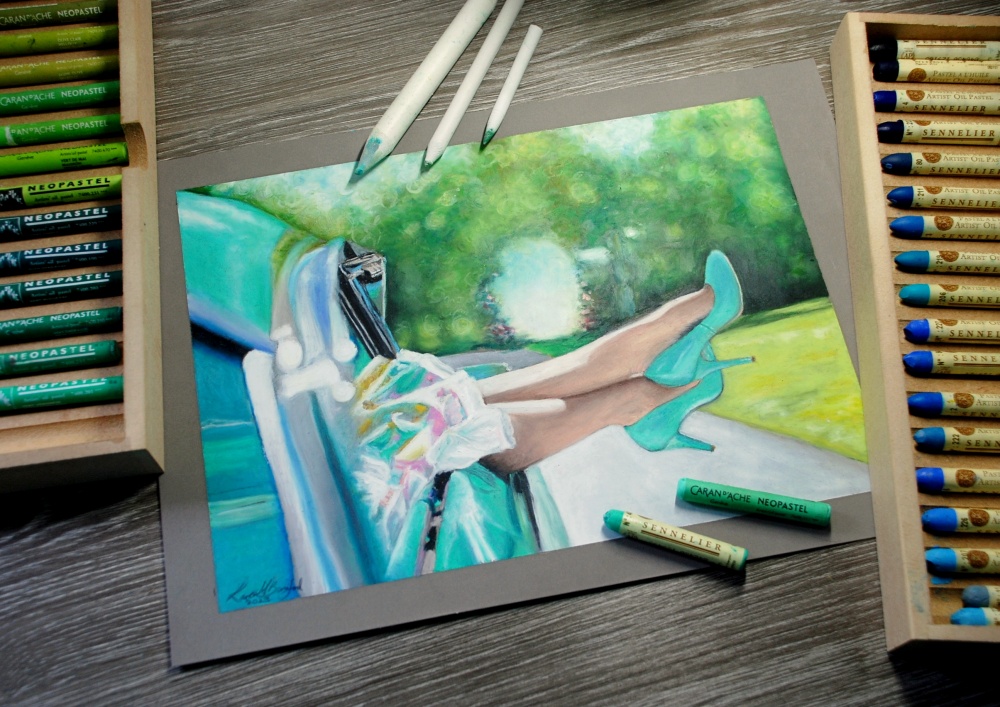
There are numerous tools that you can use to blend oil pastels. You can use your fingers, which can be messy, so we recommend paper tools such as paper stumps and tortillions. If you are working on a highly abrasive paper, the transparent blender in the Sennelier oil pastel range is the most effective option. Some artists use solvents to blend, but you can also create a blend purely by applying pastel on pastel.
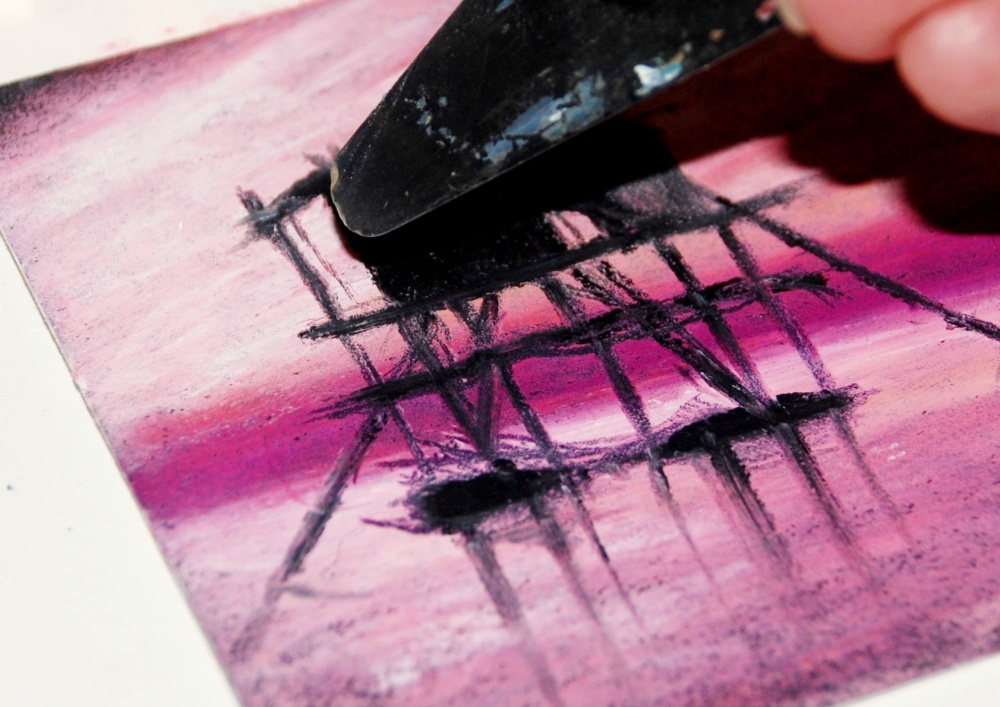
If you enjoy creating intricate artwork, you may think that oil pastels cannot achieve such detail. However, there are specific techniques that can help you overcome this challenge. I used a sheet of Colourfix black paper to create this small study. I layered the pastels and blended them before using a palette knife to remove excess pastels and reveal the paper’s original colour. This technique allowed me to create delicate and precise lines that would be impossible to achieve with oil pastels alone. You can use a craft knife like the slice tool for even more precision, but don’t cut the paper accidentally. Additionally, exploring various tools and techniques can enhance your artistic style.
How do oil pastels compare with soft pastels?
Oil pastels consist of pure pigment mixed with a blend of non-drying oil and wax binder, while soft pastels combine dry pigment, binder, and filler. Unlike soft pastels, oil pastels are water-resistant and permanent. When working with oil pastels, you can layer colours on top of each other and blend them to soften any harsh lines.
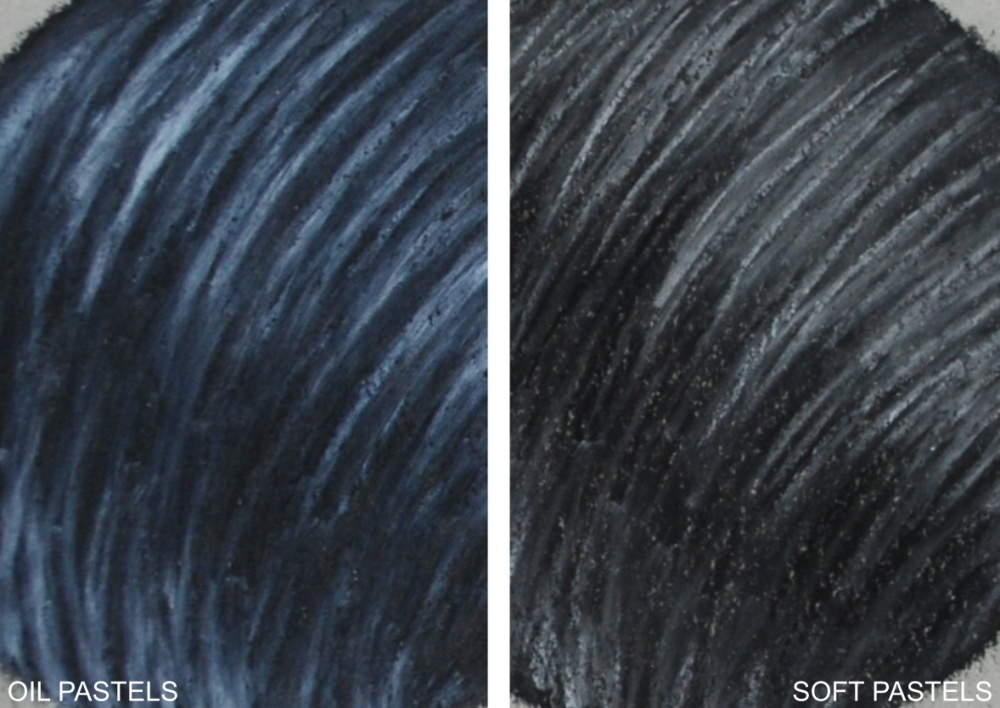
Hints & Tips
When utilizing oil pastels, you should adhere to the following guidelines:
- Keep a few sheets of kitchen towel nearby. You can use them to clean the tip of your pastel to remove excess pigment.
- Store oil pastels in a cool place to prevent bending or breaking.
- Keep oil pastel paintings out of direct sunlight when displaying.
- It’s best to avoid leaning on your painting. Even though oil pastels are less likely to smudge, the pigments can still leave stubborn stains.
- If you have applied too much pastel, use a palette knife to remove the excess before reapplying. Take extra care on softer surfaces to avoid any damage.
- For optimal longevity of your oil pastels, safeguard your artwork from dust and debris by covering it with a non-stick sheet during intervals.
- There are fixatives available for oil pastels, however, the reviews on their effectiveness is inconclusive.
- The best way to defend your artwork is to frame it behind a protective barrier like glass or acrylic glass. Be sure to include a spacer between the glass and the painting to prevent them from sticking together.
Final Thoughts
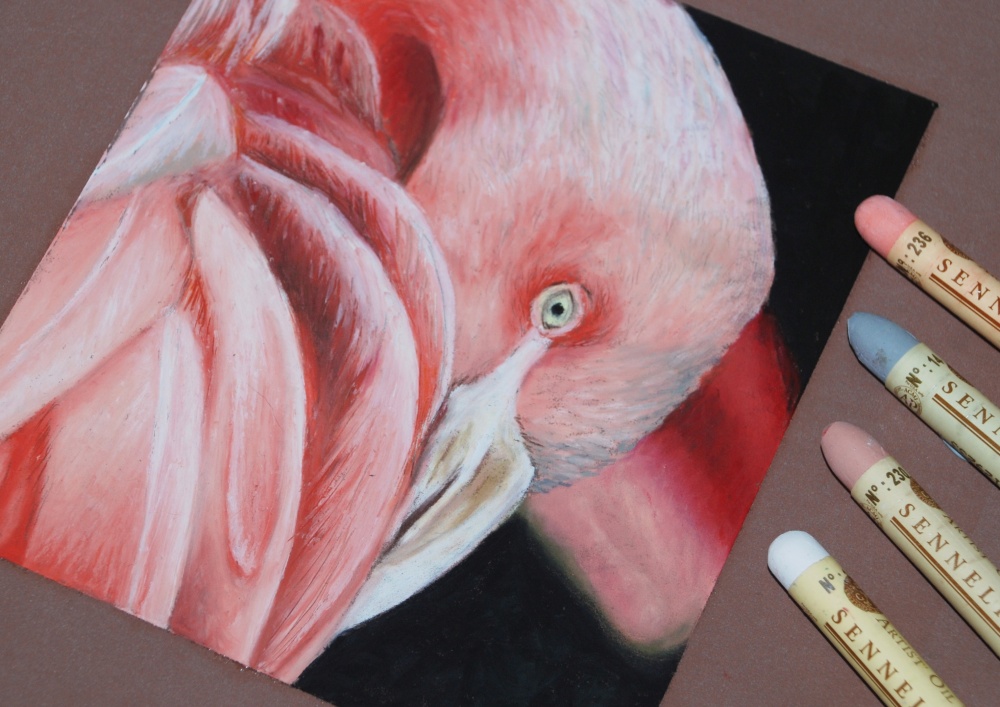
If you’re new to oil pastel art, you should not feel compelled to produce a masterpiece on your first attempt. Oil pastels are excellent for outdoor sketches and are also very portable. Don’t let initial setbacks discourage you, practice regularly, and you’ll steadily improve your skills.



